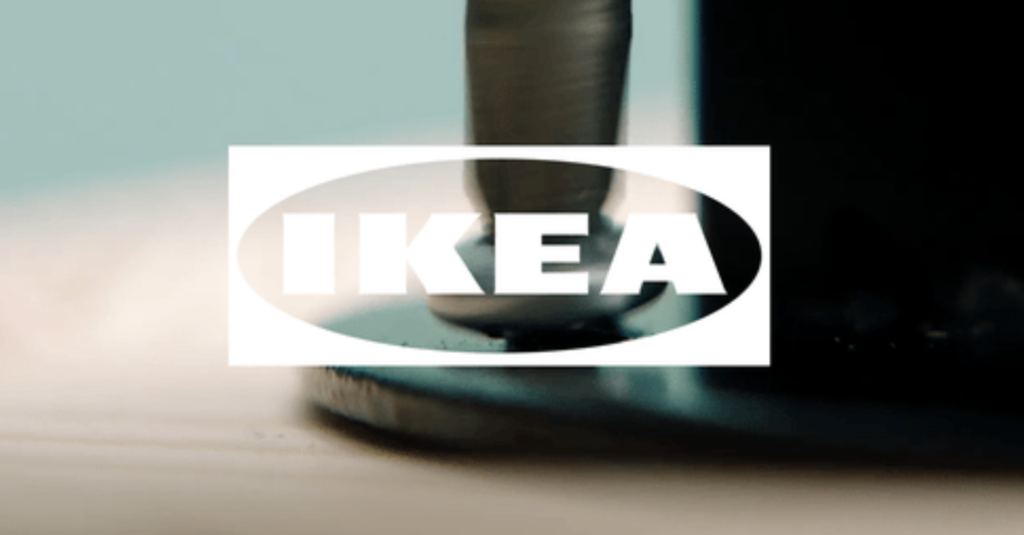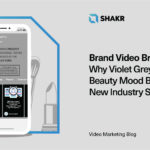When you think of IKEA, there are a few things that you likely think of, and normally in this order:
- Enormous stores that are fun to look at and are filled with furniture that’s a nightmare to put together.
- Sweedish meatballs.
- That iconic blue and yellow logo.
While it would be fascinating to see how we could turn a marketing blog post into an article about Sweedish meatballs, we all know that the focus here is going to be on that logo. It’s the same logo we’ve seen for years from the brand, and it’s what users recognize.
IKEA still changed it up, focusing on creating something more video-friendly in what they call the “video-centric” world that is modern advertising. In this brand breakdown, we’re going to take a look at what changes they’ve made, why they did it, and how you can use the same strategy to adapt your video content, too.
The Brand
IKEA, if you’re unfamiliar, is a massive, international manufacturer and retailer of furniture. The company is designed to be accessible and affordable, and they’re well known for their do-it-yourself furniture that you see assembled in a store and then take home in a package so you can test your assembly skills yourself.
The idea here is stylish and sustainable, as they say themselves, and they’ve built an incredible and very well-known name for themselves. Part of that well-known name included their bright logo, with a yellow circle overlaid on a blue square, and blue text overlaid onto the circle. It’s distinctive, and until recently, all of their video campaigns (and other marketing campaigns) featured this famous logo towards the end of the posts.
But now, that’s changing, which is why we’re looking at this company in this month’s brand video breakdown.
The Strategy
IKEA partnered up with agency 72andSunny to develop a brand new video-centric logo that was dynamic. This logo can be overlaid on top of a video as it continues to play, but instead of having the entire logo completely blocking everything else from view, only the white border and “IKEA” will be onpage; you’ll see the rest of the video playing in the background.

This dynamic logo system has actually been titled “The Fönster,” which translates into “window in English, is meant to be flexible, versatile, and help bring IKEA’s video campaigns into the modern age of video content.
This logo not only looks more modern, but it also allows a video to keep playing instead of taking users to an outro-screen that features nothing but the brand’s logo. It looks interesting, and users will stay engaged throughout the entirety of the video. Since the logo looks so interesting with part of the scene playing within it, that will also help make it more memorable, as users will spend more time looking at it.
That’s not all, though; the open-concept design also has a symbolic purpose, representing the company’s values of being open and transparent.
Choosing a design that’s white and dynamic now “future-proofs” the logo, as 72andSunny’s CEO has gone on record as saying. IKEA is ready to take the lead on branding in our new video-centric world.
The Takeaway
Not every business can afford to hire a big-name company to help them rework their logo, but there are a few things that brands should take note of here.
The first is that IKEA has adapted to a more modern look. This is something that all brands eventually need to do in time, so take a look at your branding and see if it’s something that potentially needs to be updated, even if it’s just an image.
The second is that IKEA is really looking to make a big impression with that logo. The symbolic idea– that the logo is the window, and it shows how users connect to IKEA and vice versa– is a pretty powerful one. It’s not heavy-handed in the videos, but it adds a nice touch.
Creating high-quality, dynamic branding will also be a great choice and the fact that this logo can be added to the beginning, middle, or end of a video without really interrupting it is important.
Users want to see more video right now, but they also don’t want to be interrupted; they have so many options that they’ll click away in a second. If they sense your video is coming to an end, they might leave, but having the video still playing while your logo shows up can keep them around to let that brand recognition sink in. And users would almost never keep watching a video if it started with a three-second view of your logo taking up too much of the screen, but now that’s no longer an issue thanks to The Fonster.
Conclusion
Video is continually becoming more and more important in the world of marketing, and that’s because it’s what users want to see. Brands small and large need to be investing in the medium and finding new ways to create content that their audience wants to see.
There’s one more important thing to note, too, and that’s the fact that this logo works well with any video campaign, making it versatile and therefore scalable. Scalable video campaigns are key, allowing you to generate enough high-quality content to keep users engaged and to stay relevant. And now, with tools like Shakr, you can create scalable, modern campaigns with a custom template for your brand so that you never have to miss a beat.
IKEA’s dynamic logo is a great example of a business that’s embracing our video-centric world, and they’ve worked hard to create something that both looks great and has strong symbolism to carry their brand into the future.
How are you going to do the same?
Looking for new ways to create modern, high-converting, scalable video campaigns for our video-centric world? Learn more about Shakr.



1 comments On Brand Breakdown: IKEA’s New Logo and the Video-Centric World of Modern Advertising
Pingback: Brand Breakdown: IKEA’s New Logo and the Video-Centric World of Modern Advertising – Digicloud Video ()
Comments are closed.